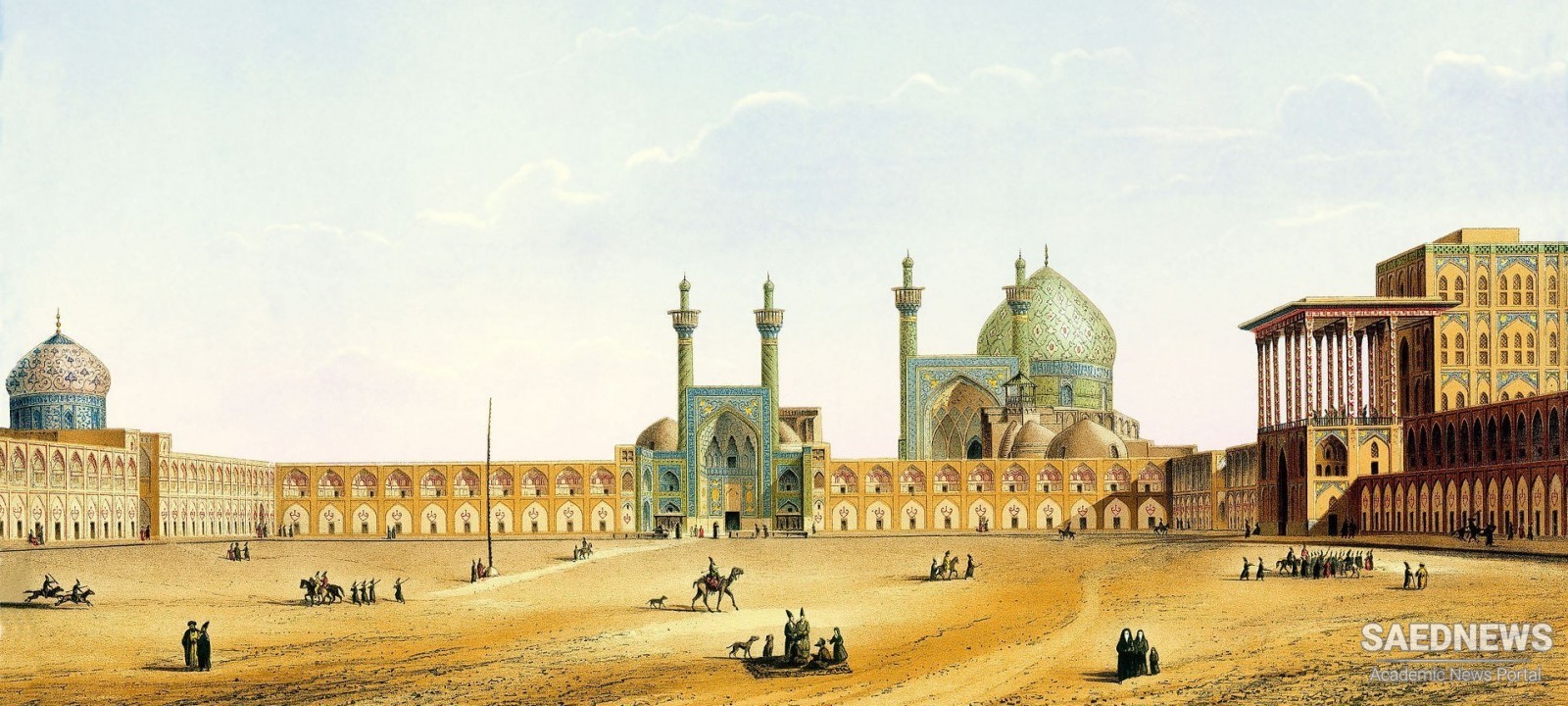This transformed Isfahan, bringing much international business to the city. During this time, several European artists, mainly Dutch, enjoyed the shah's patronage, and their technical realism and accurate likenesses made their work very successful and influential. Shah Abbas I's successor, Shah Safi I (r. 1629-1642), was so eager to have European-style paintings that in 1635 he sent an order to Holland for special paint brushes and oil colors in quantities said to be sufficient for one thousand painters. The representative of the Dutch East India Company in Isfahan even assigned two painters to teach the king to paint in the European manner.
By the mid 17th century, at the time of Shah Abbas II (r. 1642—1666), several European painters were in Isfahan. Among them were the Dutch painters Hendrich Boud Ewisin Van Lockhorst, Philip Van Angel, and Ian Van Hassel. Lockhorst was an employee of the Dutch East India Company. Van Angel was also working for the Dutch East India Company, and with its permission had a painting workshop in Isfahan. He has been credited with working with some of the local painters on the murals of the Chehel Sotun Palace. The Spanish ambassador Don Garcia Figueroa, who had been in Iran earlier on and at the time of Shah Abbas I, also mentions a Greek-born painter by the name of Jules who was trained in Italy and lived in Qazvin. Don Garcia also recounts having seen a house in Shiraz with images in its reception room and other rooms of several women dressed in Italian style, their hair adorned with flowers. He says: "the quality of the painting showed that they were made by Italians, perhaps sent by Venetians to the great king".
Armenian painters of New Julfa (a suburb of Isfahan settled by Armenians on Shah Abbas's orders, named after Julfa in the Azarbaijan homeland of the Armenians) also exercised an important influence on the art scene of Safavid Isfahan. Christianity places a strong historic focus on figural representation, through holy images on walls and panels as well as Gospel illustrations in manuscripts, so these painters belonged to a long tradition of art production. The Armenians would also have cultural links leading deep into Europe, and likely access to illustrated printed Bibles of the Netherlands, for example. Among the early Armenian painters was one by the name of Minas, who had studied European painting in Aleppo and returned to Isfahan.
By the mid 17th century, some Iranian painters, or at least those of the capital city, Isfahan, had some familiarity with Western paintings. Not all of them adapted to this particular foreign fashion, however. Mu'in Mosawer for example, the student of Reza Abbasi, remained committed to his master's painting mode, decades after Reza's death. Others preferred to paint in the style of contemporary India, which was also very fashionable during the later Safavid period. Collaborations of European painters with Iranians and the display of their art in Isfahan's palaces and churches had left its imprint on some of the local artists. The images of Europeans on those of the Chehel Sotun Palace and on the walls of the house of Sukiasian (discussed below) show how much admired these painting were at the time. Although no one knows who the creators of these artworks were, they indicate that they may have been executed with the assistance of some of the local painters. European prints and drawings were also available in Safavid Iran, and these, too, were a strong influence on Iranian artists.
Two of the court artists of this period, Muhammad Zaman and Ali-Quli Beyg Jabadar, both active in the mid 17th century, were most influenced by European painting style, and made efforts either to copy Western iconography or to demonstrate classical Persian themes in Western style, and in oil colors. The term Farangi-sazi (making European style), a hybrid mode realized by local artists, captivated the attention of the Safavid a'eyan (grandees or elite), particularly those residing in Isfahan. Shah 'Abbas IFs fascination with European painting convinced him to send a group of young painters to Europe for further training. Among them was Muhammad Zaman, who spent two or three years in Rome, where he converted to Christianity and changed his name to Paolo Zaman. On his return to Iran, Muhammad Zaman created several paintings, among them a female nude (plate 5). The nude female was copied from the Renaissance theme of Venus and Cupid. It is said that Zaman made the nude at the request of Shah Suleyman (r. 1666—1694). Zaman's Venus may be the first female nude in European style painted in Iran. Another early European female subject depicted by a Persian painter is "Woman by a Fountain," by Jabadar, done after a 16th-century Dutch image around 165021660.18 Other European women in Safavid Persian paintings appear in two fragments of wall paintings showing women in naturalistic style executed by Muhammad Zaman around 1650—1672.


 Woman, Sexual Desire and European Sense of Beauty in Early Modern Persia
Woman, Sexual Desire and European Sense of Beauty in Early Modern Persia














































